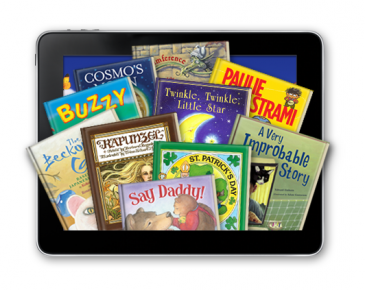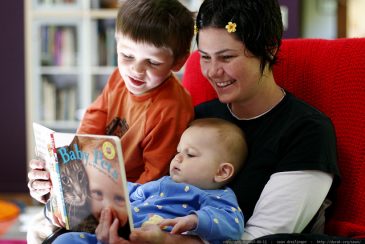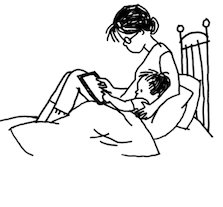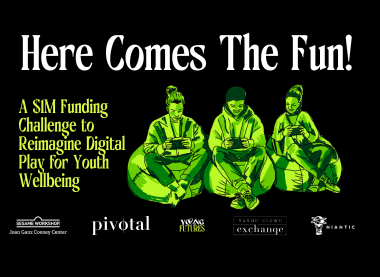Reading with Preschoolers: Just Do It!
May 5, 2015
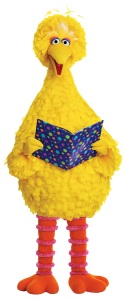 My hand tightly grasping my mother’s, I cautiously approached the low table and scanned its crowded top, gasping with a mix of delight and nervousness when I saw what my almost four-year-old self had been yearning for for what seemed like a lifetime: a crisp lined yellow card with a long piece of hot pink yarn attached at the two top corners, and my first name emblazoned in big black letters across the front. Proof that I was finally old enough to attend my library’s kids-only “Story Hour!” With the fuzzy yarn now tickling my neck, I apprehensively but resolutely left my mother and younger sister behind for the first time and followed a group of other yellow-card-bearers down a dark staircase into a bright, cool, cheery room, where a smiling librarian welcomed each and every one of us by name and invited us to sprawl out on a lush carpet. Books of all sizes, shapes, and colors were everywhere: stacked in several small child-sized bookcases, strewn across the floor, piled up haphazardly on the only chair, perched on the lowest steps. “What should we read today?” the librarian sang while sweeping one arm from right to left, and in spite of my lingering worry about how I’d find my way back to my mother, I knew in that moment I didn’t want to be anywhere else but right there.
My hand tightly grasping my mother’s, I cautiously approached the low table and scanned its crowded top, gasping with a mix of delight and nervousness when I saw what my almost four-year-old self had been yearning for for what seemed like a lifetime: a crisp lined yellow card with a long piece of hot pink yarn attached at the two top corners, and my first name emblazoned in big black letters across the front. Proof that I was finally old enough to attend my library’s kids-only “Story Hour!” With the fuzzy yarn now tickling my neck, I apprehensively but resolutely left my mother and younger sister behind for the first time and followed a group of other yellow-card-bearers down a dark staircase into a bright, cool, cheery room, where a smiling librarian welcomed each and every one of us by name and invited us to sprawl out on a lush carpet. Books of all sizes, shapes, and colors were everywhere: stacked in several small child-sized bookcases, strewn across the floor, piled up haphazardly on the only chair, perched on the lowest steps. “What should we read today?” the librarian sang while sweeping one arm from right to left, and in spite of my lingering worry about how I’d find my way back to my mother, I knew in that moment I didn’t want to be anywhere else but right there.
As we celebrate Children’s Book Week 2015, I am sure many of us who work with children’s books professionally are spending some time reminiscing about the role that specific titles and even the genre in general have played in our lives. I consider myself very lucky that for most of my career, I have been involved in creating and sharing with others the very objects that have inspired and fulfilled me for as long as I can remember. Truly, I don’t remember a day in my life without books or the benefits that come from reading: pure fun and adventure, humor, knowledge, opportunities for self-reflection, life lessons, and innumerable other personal gifts.
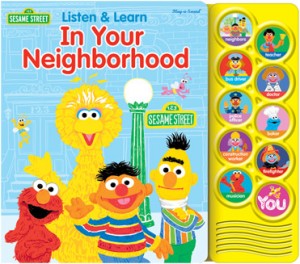 As the Publisher at Sesame Workshop, the non-profit educational organization behind Sesame Street, I am often asked by new parents when they should begin reading aloud to their children. “From the day they are born,” I always respond. No, newborn infants won’t understand the story line or even the words in the simplest of children’s books, but they will benefit nonetheless from the exposure to language, the sound of their parent’s voice, and the extra parent-child bonding that comes from reading together.
As the Publisher at Sesame Workshop, the non-profit educational organization behind Sesame Street, I am often asked by new parents when they should begin reading aloud to their children. “From the day they are born,” I always respond. No, newborn infants won’t understand the story line or even the words in the simplest of children’s books, but they will benefit nonetheless from the exposure to language, the sound of their parent’s voice, and the extra parent-child bonding that comes from reading together.
At Sesame Workshop, our mission is to help kids grow smarter, stronger, and kinder, and books are one of our most well-traveled ambassadors. With the immense support of our many print and digital publishing partners, we distribute about 20 million books for preschoolers every year in the United States in a variety of formats: storybooks, board books, sound books, novelty books, coloring books, bath books, educational workbooks, and more. We strive to make books available everywhere so that wherever a parent prefers to shop, Sesame Street books are there. And if a parent wants to supplement print books with e-books and book apps, we have those, too, each carefully developed and researched with our young audience in mind. Because it is not the type of book that matters most but rather the act of reading together that yields the greatest rewards.
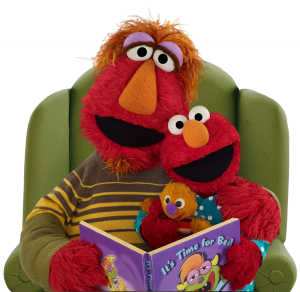 Children’s Book Week is a time to celebrate the joys of children’s books as well as to spread the word about the benefits children gain from reading from a very young age. At Sesame Street, we are cognizant of all the studies that show how important it is for children to be ready to learn when they get to kindergarten. Reading helps teach not only literacy skills but also the ability to pay attention and focus, which is essential to preschool learners’ success. We provide “parent tips” in some of our print and digital books to enrich parent-child reading experiences. Amongst our suggestions, which are based on our own research as well as that of other literacy experts, are to ask open-ended questions, point to words and pictures as you read, use character voices and sound effects to bring stories alive, ask children to predict what happens next, and follow your child’s lead (yes, it is okay to read the same page over and over again and to skip other pages entirely!)
Children’s Book Week is a time to celebrate the joys of children’s books as well as to spread the word about the benefits children gain from reading from a very young age. At Sesame Street, we are cognizant of all the studies that show how important it is for children to be ready to learn when they get to kindergarten. Reading helps teach not only literacy skills but also the ability to pay attention and focus, which is essential to preschool learners’ success. We provide “parent tips” in some of our print and digital books to enrich parent-child reading experiences. Amongst our suggestions, which are based on our own research as well as that of other literacy experts, are to ask open-ended questions, point to words and pictures as you read, use character voices and sound effects to bring stories alive, ask children to predict what happens next, and follow your child’s lead (yes, it is okay to read the same page over and over again and to skip other pages entirely!)
Doing some or all of these things will certainly enhance the reading experience, but the best advice is simply to read together. No “how to” lessons or special effects are needed for you to create special reading memories with your child, and the more you read together, the more your child will learn and the more value your child will place on reading. Do it often. Do it consistently. Do it with a variety of book formats–don’t forget audio books, books of poetry and rhyme, and song books. Do it everywhere: at home, on vacation, at Grandma’s house, at the library. Do it with your favorite books from childhood. Do it with brand-new books you discover together. Do it with purpose and your complete attention. Most of all, do it with love, and you and your child will not want to be anywhere else but right there.
 Jennifer A. Perry is Vice President and Publisher at Sesame Workshop, where she manages the development of print and digital books and book apps for preschoolers. She also oversees Sesame Workshop’s Publishing Archive of original Sesame Street book illustrations from 1970 to the present. Jennifer has been collecting children’s books since before she could read (thanks to her mother!) and boasts many first editions in her personal library. She has too many “favorite” picture book authors and illustrators to count, but among them are Beatrix Potter, Ezra Jack Keats, Gyo Fujikawa, and all of her 8 nieces and nephews, whose book art adorns every empty wall space in her bedroom.
Jennifer A. Perry is Vice President and Publisher at Sesame Workshop, where she manages the development of print and digital books and book apps for preschoolers. She also oversees Sesame Workshop’s Publishing Archive of original Sesame Street book illustrations from 1970 to the present. Jennifer has been collecting children’s books since before she could read (thanks to her mother!) and boasts many first editions in her personal library. She has too many “favorite” picture book authors and illustrators to count, but among them are Beatrix Potter, Ezra Jack Keats, Gyo Fujikawa, and all of her 8 nieces and nephews, whose book art adorns every empty wall space in her bedroom.
